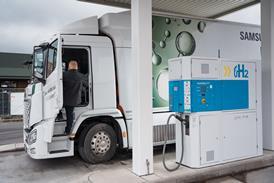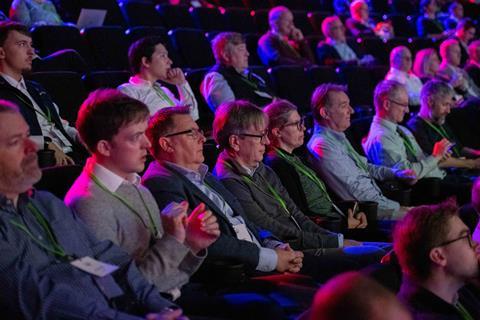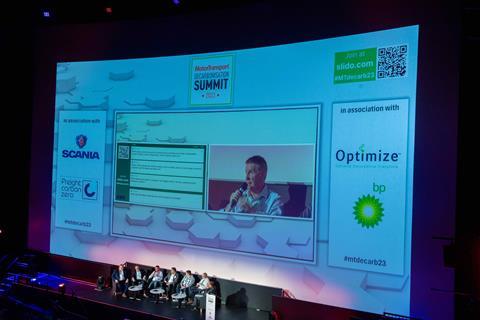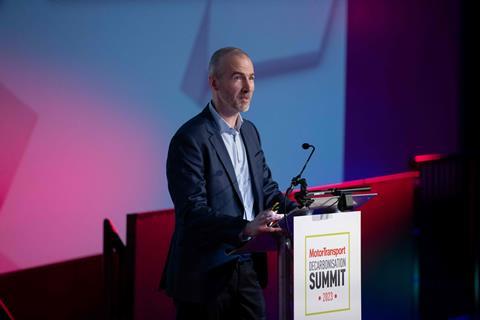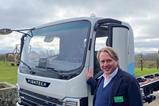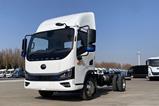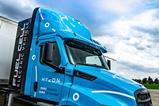This year’s Motor Transport Decarbonisation Summit brought together key stakeholders for a day of debate, discussion and insights as delegates tackled the big issues associated with the decarbonisation of the road freight and commercial vehicle sector.
At the Motor Transport Decarbonisation Summit, held last week in Birmingham, we asked the delegates to explain: “What would you identify as the biggest legislative and policy barriers which need to be overcome to facilitate the journey to net zero?” We’d asked a similar question when we hosted “Decarbonisation Day” at Road Transport Expo in June.
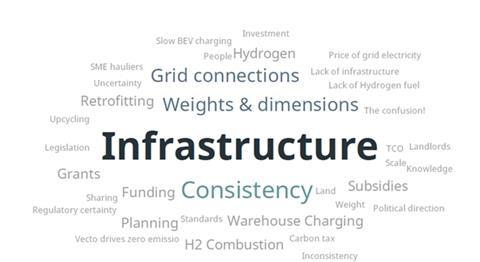
Back then the biggest concern was “road weight dispensation”, as industry was getting itself bothered about how it can operate maximum weight artic combinations (battery or hydrogen fuel cell powered) in the brave new world. While, six months on, those concerns remain – the bigger the writing in a word cloud (above), the more popular the response – the finger pointing at the Summit was clearly in the direction of infrastructure. The 200 or so delegates who voted, made up of a cross-section of operators, suppliers and other interested parties, shared a cross-section of concerns, but the common theme was infrastructure, and more specifically the lack of it.
Those in attendance will know there was a fierce exchange of views between the battery electric and hydrogen camps, as the Summit was used as an opportunity to share concerns around the power source for the new generation of trucks. Although the on-stage set-to didn’t really move the discussion forward, it was good theatre.
There appears to be confidence that the truck manufacturers will “do the right thing” with the emerging technology and the conversation has moved away from whether the trucks will be ready. Indeed Scania, one of the sponsors for the Summit, alongside bp and Optimize, demonstrated its current range of HVO, CNG and BEVs for delegates to see the products which are available here and now. In addition, the Swedish truck builder revealed it will be supplying a hydrogen fuel cell truck for the zero emission HGV and infrastructure demonstration (ZEHID), thereby completing the full set of low and zero emission vehicles in the line-up.
Decarbonisation Summit 2023 from Sirastudio on Vimeo.
We’ve no doubt, a similar picture will emerge around infrastructure, particularly as the 60-or-so new public charging sites emerge through the funding of the ZEHID programme and other schemes. Indeed, on the day before the Summit, we facilitated a “study tour” at the nearby Tyseley Energy Park, where SSE unveiled its plans for a new 360kW public charging facility at the park. As we’ve said before, there are reasons to be confident – the infrastructure roll-out has commenced.
If hydrogen is going to be an effective fuel for trucks, we’ll need to see similar evidence of market confidence and we look forward to further announcements.
So, while not wishing to diminish the concerns around infrastructure, the sector is waking up to what’s required and responding. There’s a huge network roll-out required over the next 15 years to facilitate the shift to net zero and we mustn’t underestimate the effort that’s going to be required to align renewable energy, planning consent, grid connections, refuelling technology and the skills and capability to keep it all working, but we’ve come away from the Summit, heartened by the progress.
Even on the issue of weights and dimensions we sense the policy makers are listening. Bob Moran, Deputy Director for Decarbonisation Strategy at the DfT, was one of the speakers and panellists at the Summit and gave a strong indication government was looking at the challenges operators are facing when it comes to operating carbon zero vehicles within the current weights and dimensions envelope, he said. As the government starts to shape up its policy to legislate for the end of sale dates for fossil fuelled trucks, this listening project will be essential.

Before we get too carried away with the congratulatory back slapping, there is much, still, for industry to do if it’s going to turn the tide of 125-years of fossil-fuelled road freight transportation. With one or two notable exceptions the small and medium-sized fleet operators were absent from the Summit and we’re going to need to work out some alternative means of engaging the majority of the UK fleets in the journey to net zero.
Indeed, many businesses haven’t even brought decarbonisation up their priority list yet. We hear, too often, that the sustainability teams within organisations are reporting into the communications and marketing departments, even in the big companies. Surely we’ve gone past sustainability being a PR and marketing stunt! Sustainability heads, directors, departments – call it what you will – must have a seat on the board or, at the very least, report directly into the CEO of an organisation.
We’ve said before, carbon reporting will become as important to your businesses as the balance sheet and financial statements. There’s legislation coming to make everyone CEO take notice and the discussions around carbon reduction and sustainability must be heard at the most senior levels within companies.


